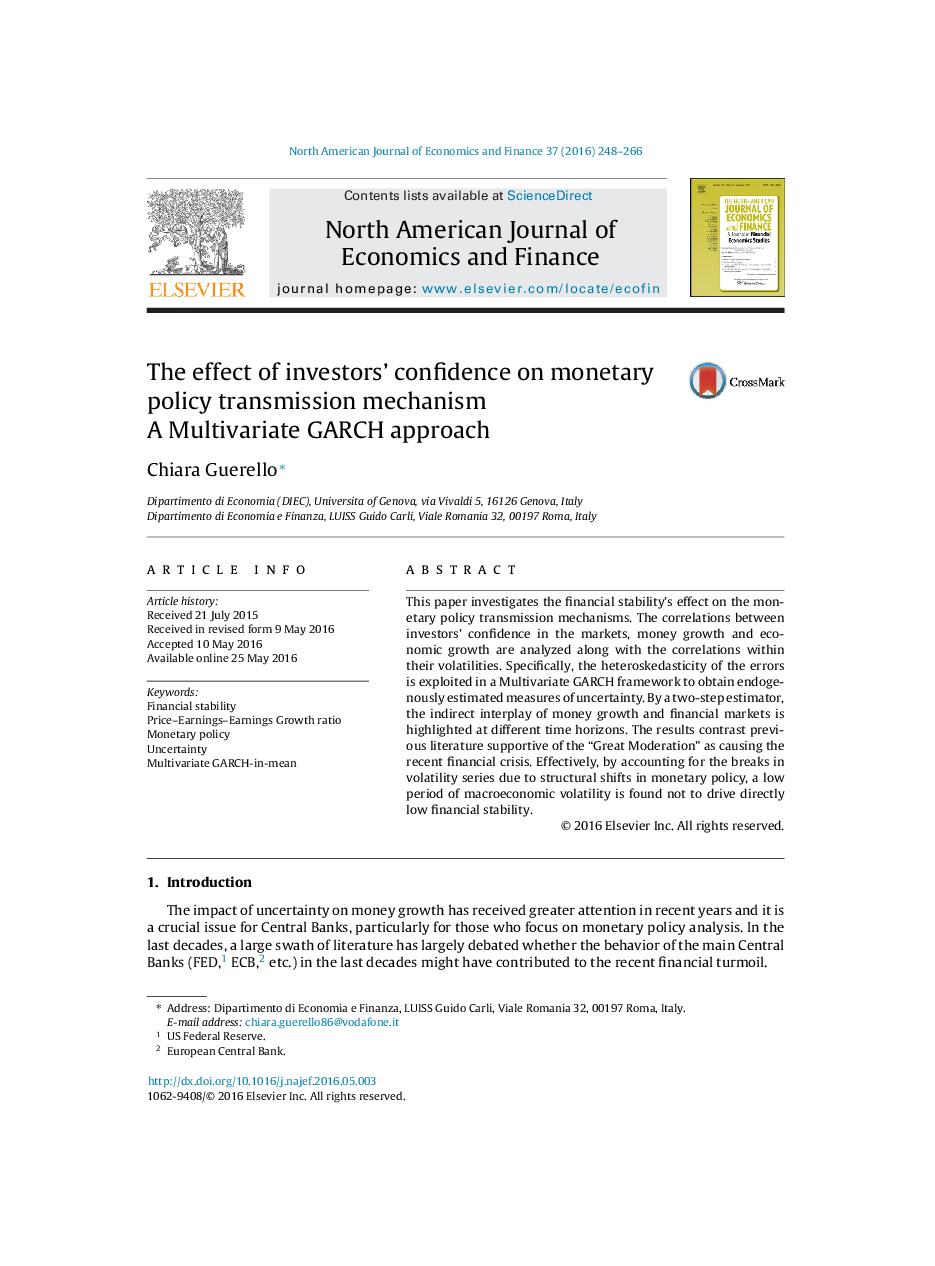| Article ID | Journal | Published Year | Pages | File Type |
|---|---|---|---|---|
| 974913 | The North American Journal of Economics and Finance | 2016 | 19 Pages |
•There are structural breaks in the variance–covariance of money, real GDP and PEG.•Structural changes in policy downward bias the PEG-money covariance’s estimates.•Monetary policy is not able to affect directly PEG ratio and its volatility.•Stabilizing output does not lead to high financial volatility but reduces it.•High PEG explains low financial stability but does not affect economic volatility.
This paper investigates the financial stability’s effect on the monetary policy transmission mechanisms. The correlations between investors’ confidence in the markets, money growth and economic growth are analyzed along with the correlations within their volatilities. Specifically, the heteroskedasticity of the errors is exploited in a Multivariate GARCH framework to obtain endogenously estimated measures of uncertainty. By a two-step estimator, the indirect interplay of money growth and financial markets is highlighted at different time horizons. The results contrast previous literature supportive of the “Great Moderation” as causing the recent financial crisis. Effectively, by accounting for the breaks in volatility series due to structural shifts in monetary policy, a low period of macroeconomic volatility is found not to drive directly low financial stability.
